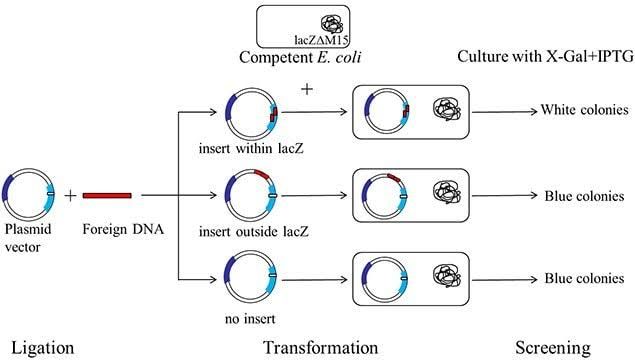
Transformation is a key procedure in genetic engineering that involves introducing foreign DNA into a host organism, typically bacteria like Escherichia coli (E. coli). This process allows for the replication and expression of the introduced DNA, which can be used for various applications such as cloning, protein expression, or gene function studies.
Step 1: Preparation of Competent Cells
Before transformation can occur, bacterial cells must be made competent, meaning they are capable of taking up foreign DNA. There are two common methods to prepare competent cells:
- Chemical Transformation (Heat Shock Method):
- E. coli cells are treated with calcium chloride (CaCl2) to make their membranes permeable.
- The cells are incubated on ice with plasmid DNA for about 30 minutes.
- A heat shock is applied by briefly placing the cells at 42°C for about 30 seconds, followed by returning them to ice. This temperature change facilitates the uptake of the plasmid DNA.
- Electroporation:
- Cells are washed and resuspended in a low-conductivity buffer (like glycerol).
- An electric pulse is applied using an electroporator, creating temporary pores in the cell membrane that allow DNA to enter.
Step 2: Introduction of Plasmid DNA
After preparing competent cells, a plasmid containing the gene of interest is introduced into these cells:
- Typically, 1-10 ng of plasmid DNA is mixed with competent cells.
- The mixture is incubated on ice for a short period to allow binding before applying heat shock or electroporation.
Step 3: Recovery Phase
Following transformation, it is crucial to allow the transformed bacteria time to recover and express any antibiotic resistance genes encoded by the plasmid:
- The transformed cells are placed in a nutrient-rich medium (such as SOC medium) without antibiotics and incubated at 37°C for about an hour.
- This step enhances cell viability and increases transformation efficiency.
Step 4: Plating Transformed Cells
The next step involves plating the transformed bacteria onto agar plates containing selective media:
- The plates should contain an antibiotic corresponding to the resistance gene present on the plasmid (e.g., ampicillin).
- If blue-white screening is being used, X-gal and IPTG should also be included in the agar medium.
Blue-White Screening
Blue-white screening is a method used to differentiate between recombinant and non-recombinant bacterial colonies based on color. It exploits the functionality of the β-galactosidase enzyme encoded by the lacZ gene.
Mechanism of Blue-White Screening
- LacZ Gene Functionality:
- The lacZ gene encodes β-galactosidase, which can hydrolyze X-gal (a substrate) into a blue pigment.
- Insertion of foreign DNA into a specific region of this gene disrupts its function.
- α-Complementation:
- Competent E. coli strains used in this method carry a mutation in lacZ (lacZΔM15), making them unable to produce functional β-galactosidase unless complemented by an α-peptide from another source.
- Plasmids designed for blue-white screening contain an α-peptide coding sequence along with a multiple cloning site (MCS). When no insert is present, α-complementation occurs, producing active β-galactosidase that turns colonies blue when grown on X-gal media.
Steps in Blue-White Screening
- Plating Transformed Cells:
- After recovery, transformed E. coli are plated onto agar plates containing X-gal and IPTG along with antibiotics.
- Incubation:
- Plates are incubated overnight at 37°C for optimal growth and color development.
- Colony Color Observation:
- Colonies that remain white indicate successful insertion of foreign DNA into lacZ (recombinant colonies).
- Blue colonies indicate non-recombinant plasmids where β-galactosidase activity has not been disrupted.
- Selection of Recombinant Colonies:
- White colonies can be selected for further analysis since they likely contain the desired insert.
- Confirmation Tests:
- Selected white colonies can undergo further testing such as colony PCR or restriction digestion to confirm the presence and orientation of the inserted gene.
In summary, the procedures for transformation involve preparing competent cells, introducing plasmid DNA through heat shock or electroporation, allowing recovery in nutrient media, and then plating on selective agar plates where blue-white screening helps identify successful recombinants based on colony color







